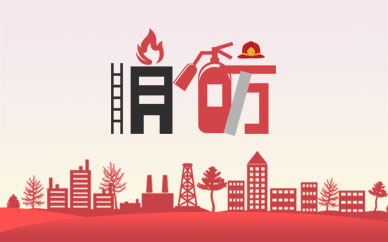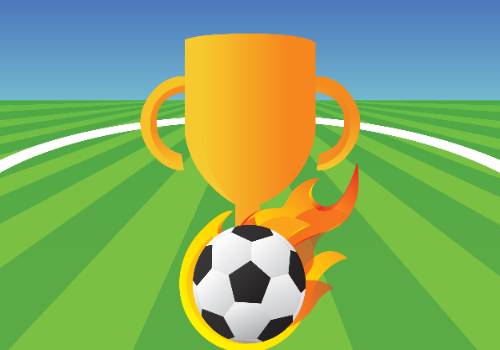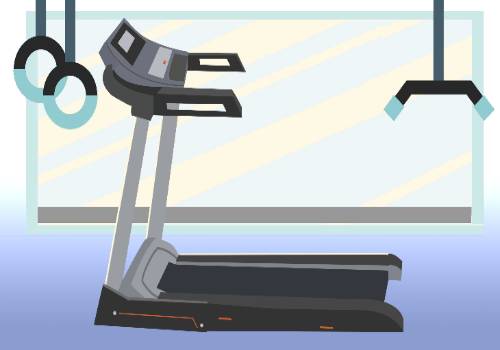The Importance of Balanced Play |全面而多样化游戏的重要性
滑动查看中文
In Chapter 2 of Purposeful Play, teachers explored how to balance different types of play at school. Different kinds of play offer opportunities for students to engage, develop skills, and personalize their learning.
 (资料图片)
(资料图片)
| /
★
Our Early Years educators worked in expert groups to explore 4 different kinds of play and share how they may look in our Early Years classrooms:
Types of Play
1
Fantasy/Imaginative Play
During this type of play, students use their imaginations to engage with materials, their environment, and their classmates.
Here are some examples of fantasy and imaginative play in EY at ISNS:
K3
Students take on the role of a character from a story they have been listening to. They are moving around like a snake with a long tongue.
K4
Students are using their imaginations to search the school campus for ‘clouds’. They are gathering their imaginary clouds in a basket that they will later use to make their cloud bread.
K5
Students uses their imagination to develop their numeracy skills while running their own pizza restaurant.
2
Constructive Play
During this type of play, students use materials to create a product or accomplish a goal.
Here are some examples of constructive play in EY at ISNS:
K3
Students work together to construct a system where the ball goes down the slide and is collected by the moving Ferris wheel, which starts the cycle all over again.
K4
Students use their imagination to consider what else a box could be. For K4 , these boxes were the parts of a robot!
K5
During UOI center time, K5 students worked together to construct their own car park.
3
Games with Rules
During this type of play, students learn to follow rules and strengthen their self-regulation.
Here are some examples of games with rules in EY at ISNS:
K3
In the photo under Rough and Tumble Play, K3 students are seen playing 老鹰抓小鸡. During this time, students are learning how to follow rules, manage their emotions and play together.
K4
Students explore rules to new games and learn how to take turns while playing Duck, Duck, Goose.
K5
Students learn about phonics while playing a game with their classmates.
4
Rough and Tumble Play
During this type of play, students engage in riskier physical behaviors that are necessary for physical, social, and cognitive development.
Special note:
We acknowledge that you might be concerned with the idea of rough and tumble play at school. Your child’s safety is our number one concern but we want to share that this type of play is critical to child development. As educators we acknowledge the importance of students engaging in this type of play, but we also abide by the rules and expectations at ISNS to ensure students safety. Students can engage in this type of play at school within reason. Some aspects of this play are not appropriate in a school setting, but we encourage families to recognize the importance of this play at home as well. If you have any questions about this form of play, please feel free to contact your child’s teacher, Mrs. Dorsey, or Mr. Tucker.
Here are some examples of rough and tumble play in EY at ISNS:
K3
Both K3 classes play 老鹰抓小鸡 on the roof as part of our weekly group game time. During this time, they learn how to follow rules to new games and explore how to use their bodies in safe and caring ways.
K5
K5 students are using and developing their gross motor skills while being risk-takers in reaching new heights in play!
Documenting Play
●
While students engage in different types of play, teachers and teaching assistants are continuously interacting with students and documenting their play.
Documentation can look like:
Taking pictures and videos to record play moments. Teachers can play the video with the students to reflect on their play and share the moments to inspire others" play. Teachers will also watch the videos to capture the conversation the students had to analyze and use it for planning or expanding their environment for play.
Writing notes about students’ behaviours, conversations and questions to inform future teaching and learning.
Checklists to see when and how students are developing and mastering skills.
What do our teams want you to
know from this chapter?
K3
“To develop into the fullest versions of ourselves, we need outlets for fantasy and physicality, construction and cooperation, and time to grow.” (26)
There are many kinds of play: fantasy/imagination; constructive; games with rules; and rough-and-tumble. Each offer children opportunities to develop their minds and bodies. They help children understand how to play together in a group, how to sense their friends’ feelings, how to control their bodies, and more.
Provide opportunities for your child to engage with others their age and let them learn how to problem solve. Let them learn how to fall down and get back up; how to identify different feelings and express them in an appropriate way; develop persistence and work through setbacks.
K4
Play helps children be better children. We often worry too much about what the children need next and not what they need now. We learned all the important life skills through play. As we did, our little humans are learning all the important life skills from PLAY.
K5
There are many kinds of play, and each kind is important and teaches life-long skills. For example, children learn communications skills, problem-solving skills regulation, as well as physical development, social and cognitive development.
Slide to English
在《目的性游戏》第二章中,教师们探讨了如何平衡学校不同类型的游戏。不同类型的游戏为学生提供了参与、发展技能和个性化学习的机会。
| /
★
我们的幼儿教育工作者在专家小组中探索了4种不同的游戏,并分享了它们在我们的幼儿课堂上的样子:
游戏的种类
1
幻想/充满想象力的游戏
在这类游戏中,学生们通过他们的想象力去接触材料、周围环境和同学。
以下是ISNS关于幼儿的一些幻想和想象游戏的例子:
K3
学生扮演他们一直在听的故事中的人物。他们像一条有着长舌的蛇一样四处走动。
K4
学生们正在发挥他们的想象力在校园里寻找“云”。他们正在把想象中的云收集在篮子里,然后用收集来的“云”做云面包。
K5
在经营自己的披萨餐厅的同时,利用他们的想象力发展他们的数数技能。
2
结构游戏
在这类游戏中,学生们使用材料来创造一个产品或实现一个目标。
以下是ISNS幼儿园关于结构游戏教学的一些例子:
K3
学生一起构建了一个系统,在这个系统中,球从滑梯上滑下来,然后被移动的摩天轮收集起来,重新开始循环。
K4
学生运用他们的想象力来思考盒子还可以是什么。对于K4班级来说,这些盒子是机器人的部件!
K5
在探索单元学习区时间里,K5同学一起建造了自己的停车场。
3
游戏及其相关规则
在这类游戏中,学生要学会遵守规则,加强自我调节。
以下是ISNS关于幼儿园游戏和一些相关规则的例子:
K3
在“吵闹式游戏”下面的照片中,K3的学生正在玩老鹰抓小鸡。在这段时间里,学生们学习如何遵守规则,管理自己的情绪,一起玩耍。
K4
学生探索新游戏规则,学习如何轮流玩鸭子、鸭子、鹅。
K5
学生在与同学玩游戏时学习拼读。
4
吵闹式游戏
在这类游戏中,学生参与到风险较大的身体、社交和认知发展所必需的行为中。
特别提示
我们知道你可能会关心学校里的吵闹式游戏。孩子的安全是我们最关心的问题,不过我们想要分享的是,这类游戏对孩子的发展至关重要。作为教育工作者,我们承认学生参与这类游戏的重要性,但我们也遵守ISNS的规则和期望,以确保学生的安全。在合理的情况下,学生可以在学校参与这类游戏。这个游戏的某些方面不适合在学校的环境中,不过我们鼓励家长们认识到这个游戏在家里的重要性。如果您对这种游戏形式有任何疑问,请随时联系您孩子的老师Mrs. Dorsey或Mr. Tucker。
以下是幼儿园在ISNS的一些吵闹式游戏的例子:
K3
两个K3班级都在屋顶玩老鹰抓小鸡,这是我们每周小组游戏时间的一部分。在这段时间里,他们学习如何遵守新游戏的规则,并探索如何以安全和关爱的方式使用他们的身体。
K5
K5的学生在发挥和发展他们的肌肉运动技能的同时,也在游戏中达到新的高度!
游戏记录
●
当学生参与不同类型的游戏时,教师和助教会不断地与学生互动,并记录他们的游戏。
记录是这样的:
拍摄照片和视频记录游戏时刻。教师可以与学生一起播放视频,反思他们的游戏,并分享这些时刻,以激励其他人一起玩。教师还将观看视频捕捉学生们的对话,并对其进行分析和将其用于计划后面的课程或拓展他们的游戏环境。
记录学生的行为、对话和问题,为今后的教学提供信息。
查看学生何时以及如何发展和掌握技能的清单。
我们的团队希望您从这一章中
了解什么?
K3
“为了发展成最完整的自己,我们需要释放幻想和身体、积极建设和合作,以及让成长的时间有意义。”(26)
游戏有很多种:幻想/想象的、结构的、有规则的和吵闹的游戏。它们都为孩子提供了发展心智和身体的机会。他们帮助孩子们理解如何在一个群体中一起玩耍,如何感知朋友的感受,如何控制自己的身体等等。
为您的孩子提供与同龄人接触的机会,让他们学会如何解决问题。让他们学会如何跌倒然后爬起来;如何识别不同的感受,并以适当的方式表达;培养毅力,克服挫折。
K4
游戏帮助孩子成为更好的孩子。我们常常过于担心孩子们接下来需要什么,而不是他们现在需要什么。我们在玩耍中学会了所有重要的生活技能。正如我们所做的那样,我们的小朋友正在从游戏中学习所有重要的生活技能。
K5
游戏有很多种,每一种都很重要,都是能传授终生的技能。例如,孩子学习沟通技巧,解决问题的技巧,以及身体发育,社交和认知发展。





















 营业执照公示信息
营业执照公示信息